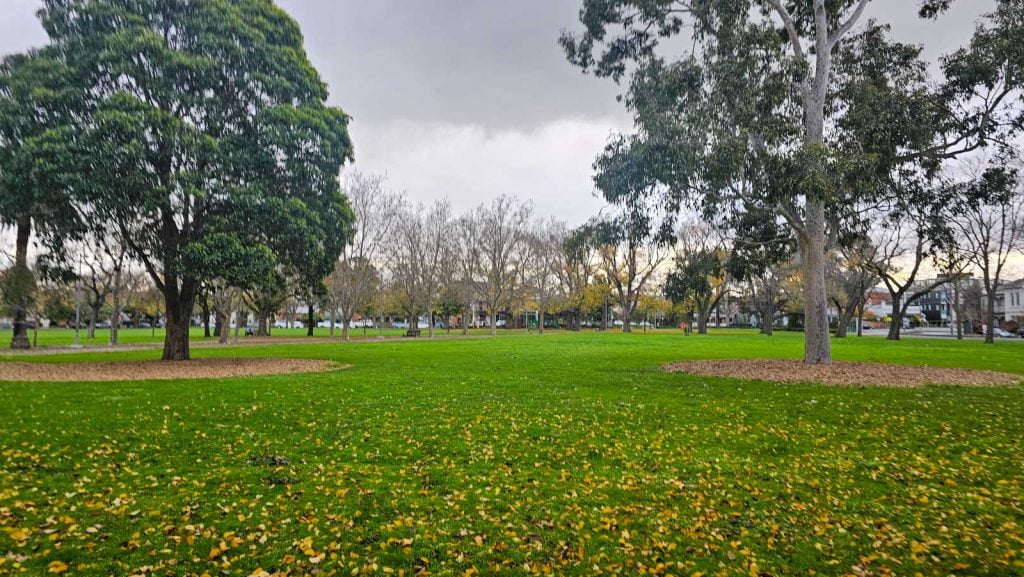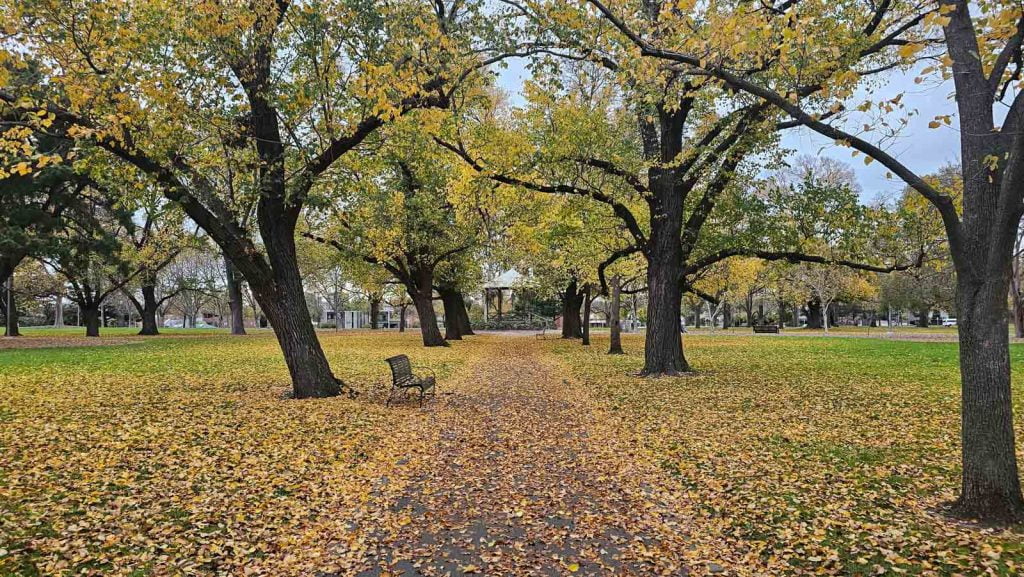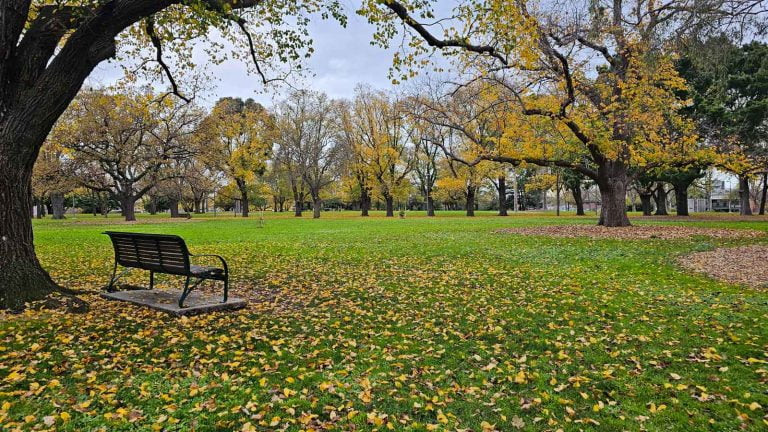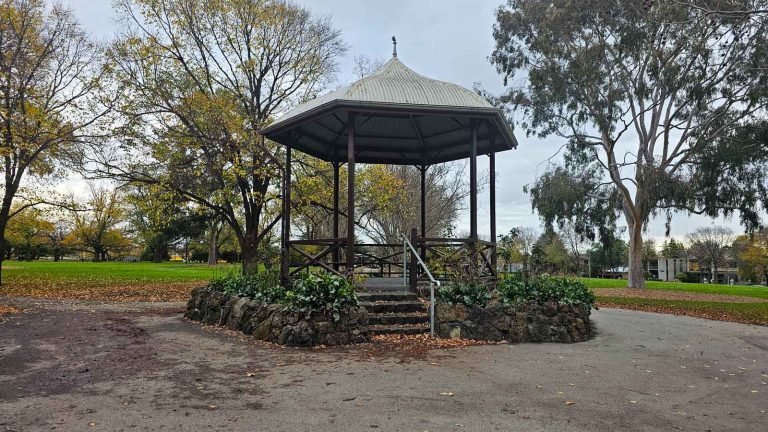Darling Gardens is a local favourite. Dog lovers enjoy a picturesque spot in Clifton Hill where your furry friends can roam free. This park offers a peaceful vibe full of Victorian charm. Its lush landscapes, dedicated dog area and public amenities make it a popular choice for dogs and their owners.
The off-leash area forms a triangular space along North Terrace. It covers approximately 20,000 sqm, providing plenty of space for your dogs to explore and play. However, the off-leash area lacks fencing and sits close to public roads, including the high-traffic Hoddle Street. We recommend you have good recall control over your dogs.

When autumn arrives, Darling Gardens transforms into a canvas of fiery reds, golden yellows, and burnt oranges, courtesy of its tall trees. Come spring, the park is awash with vibrant greens, delicate pinks, and bright whites, making every visit a visual treat.
The park's expansive lawns are perfect for walking, running, and playing, offering ample space for various activities. Shady avenues provide cool respite on hot summer days, ensuring the park remains enjoyable throughout the year.
Darling Gardens Park Amenities
Off-Leash Amenities
Darling Gardens' off-leash area offers numerous features to make your visit enjoyable:
- Dog bag dispensers: Conveniently placed dog bag dispensers for easy clean-up
- Dog water stations: Water fountains to keep your furry friends hydrated
- Shady seating: Tree-lined paths offering cool spots on warm days
- Pathways: Tree-lined paths that create a pleasant walking experience

On-Leash Amenities
Even when your dog is on a leash, there are plenty of amenities to enjoy:
- Public toilets: Located in the southeast corner of the park
- Barbecue and picnic areas: BBQs, picnic tables, and a rotunda for gatherings and outdoor meals
A playground is located near the off-leash area where dogs are not allowed at any time. Owners must keep their dogs on a leash within 10 metres of playground areas.
Visiting Darling Gardens in Clifton Hill
The off-leash area runs along North Terrace, near Queens Parade. While the park is popular on weekends, it remains generally quiet during the week. Parking is available along North Terrace and Gold Street.
Public transport options include buses 246, 504, and 546, which all stop next to the park. Clifton Hill train station, located across the road, runs the Hurstbridge and Mernda lines. The nearby Queens Parade services the 86 tram line. Check the PTV website for rules on travelling with dogs on public transport.
Darling Gardens FAQs
What is the history of the Darling Gardens?
Darling Gardens is locally significant as an early and important recreational facility within the Collingwood and Clifton Hill area. The site has strong associations with the local community, having been home to various sporting groups and the focus of community activities.
The park was developed in the 1860s and contains two trees recorded on the National Trust of Australia (Victoria) Significant Tree Register.
The gardens were initially reserved for public use in 1863. Ferdinand Von Mueller, the Director of the Melbourne Botanic Gardens, supplied seeds and plants and offered recommendations for laying out the site.
During the 1860s and 1870s, the council leased the site for grazing and used it for dumping night soil. By the 1890s, they laid out the gardens with perimeter picket fencing, a stone grotto, and planted deciduous trees, including Elms and Oaks.
The park was a community hub, hosting music recitals, fetes, and sporting activities. In 1907, a community tree planting day effectively ended the use of the gardens for organised sport. The bandstand, constructed in the park's centre in 1906, was later demolished in the 1950s and reconstructed in 1976.
In the 1950s, the council filled in the grotto and rockery, demolished the caretaker's cottage, and replaced it with public toilets. They built the infant welfare centre in the southeast section in 1956 and extended it in 1966.
Darling Gardens' ongoing development since the 1860s, combined with its cultural, historical, aesthetic, social, and scientific significance, makes it a treasured part of Melbourne's heritage.










